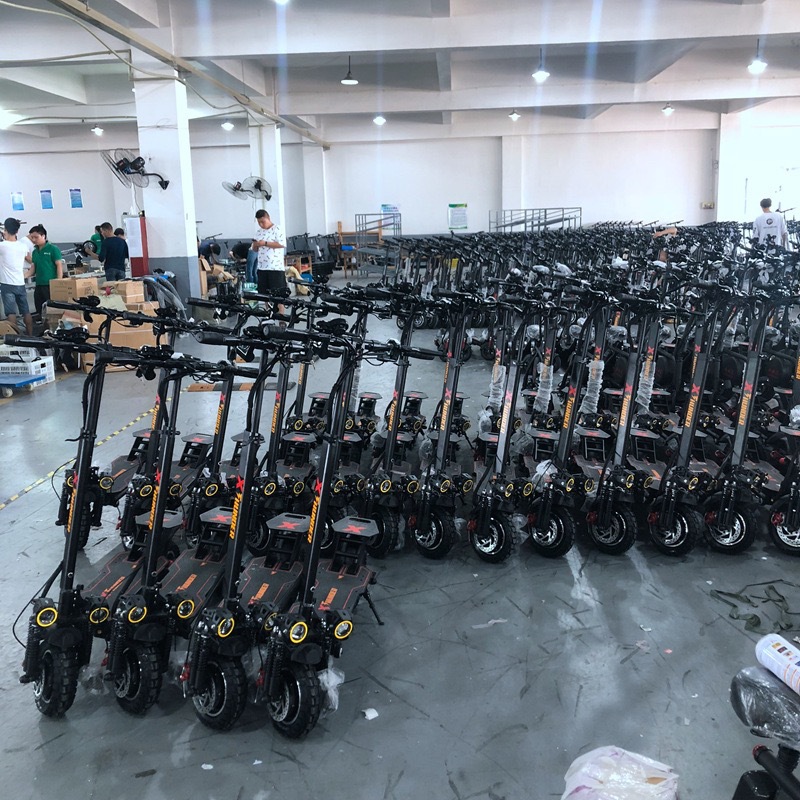Unlike traditional kick scooters, e-scooters require no physical effort to move

An electric scooter (e-scooter) is a compact, motorized vehicle designed for short-distance urban travel. It typically features a narrow deck to stand on, handlebars for steering, and small wheels, powered by an electric motor and rechargeable battery. Unlike traditional kick scooters, e-scooters require no physical effort to move—just throttle control—though some models allow manual kicking for backup power.
Key Components
-
Motor: Hub motors (in wheels) or mid-drive motors (under the deck). Power ranges from 250W (entry-level) to 10,000W+ (high-performance).
-
Battery: Lithium-ion batteries (common in 2024) with ranges of 15–60 miles per charge, depending on speed and terrain.
-
Deck: Platform for standing, often with anti-slip surface.
-
Handlebars: Equipped with throttle, brakes, and sometimes a display for speed/battery info.
-
Brakes: Disc, drum, or regenerative (using the motor to slow down).
Types of E-Scooters
-
Commuter Scooters
-
Examples: Xiaomi Mi Scooter, Segway Ninebot MAX.
-
Features: Lightweight (25–40 lbs), 15–25 mph speeds, 15–40 mile range.
-
Best for: Short urban trips (e.g., last-mile commuting).
-
-
High-Performance Scooters
-
Examples: Dualtron Thunder 3, Kaabo Wolf King GT.
-
Features: 40–60+ mph speeds, 50+ mile range, dual motors, suspension.
-
Best for: Thrill-seekers or long-distance riders.
-
-
Foldable Scooters
-
Examples: Unagi Model One, Apollo Air.
-
Features: Compact design, easy to carry/store.
-
-
Off-Road Scooters
-
Examples: Dualtron X II, Kaabo Mantis.
-
Features: Large pneumatic tires, rugged suspension, high ground clearance.
-
-
Seated Scooters
-
Examples: EMOVE Cruiser S, Varla Pegasus.
-
Features: Added seat for comfort, ideal for longer rides.
-
Pros vs. Cons
| Pros | Cons |
|---|---|
| ✅ Portable and easy to park | ❌ Limited range (vs. e-bikes) |
| ✅ Affordable (300–5,000+) | ❌ Less stable on rough terrain |
| ✅ Low maintenance | ❌ Safety risks (small wheels) |
| ✅ Faster than walking/biking | ❌ Weather-dependent (rain/snow) |
Safety & Legal Considerations
-
Helmet Laws: Required in many regions for speeds >15 mph.
-
Speed Limits: Often capped at 15–25 mph on public roads/bike lanes.
-
Where to Ride: Varies by location—some cities ban e-scooters from sidewalks.
-
Weight Limits: Most support 220–330 lbs.
Why Choose an E-Scooter Over an E-Bike?
-
Portability: Fold and carry into offices or public transport.
-
Cost: Cheaper upfront (basic models start at ~$300).
-
Parking: Easier to secure in crowded areas.
Popular Brands (2024)
-
Entry-Level: Xiaomi, Segway, NIU.
-
Mid-Range: Apollo, Vsett, Inokim.
-
Premium: Dualtron, Kaabo, Rion.
Common Mistakes to Avoid
-
Ignoring local laws (e.g., banned in some cities like San Francisco).
-
Overestimating battery range (real-world range is ~70% of advertised).
-
Skipping safety gear (gloves, helmets, lights).
2024 Trends
-
Swappable Batteries: For extended range (e.g., Gogoro).
-
Smart Features: GPS tracking, app connectivity, and theft alarms.
-
Sustainability: Brands using recycled materials (e.g., Pure Advance).
Final Note
E-scooters excel for short urban commutes, but they’re less practical for hills, rough terrain, or long distances. For a balance of speed and comfort, consider an e-bike instead. Let me know if you’d like model recommendations!
Leave a Reply